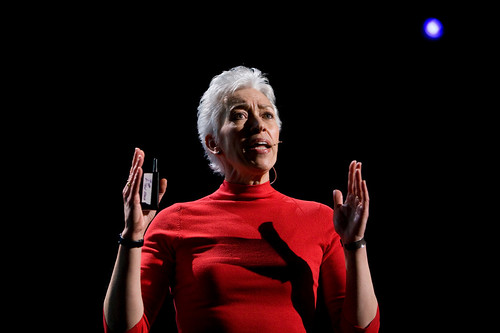Nina Jablonski talked to us about skin. One thing we learned is that those with lots of melanin have to recognize that they have a lot of natural sun screen in their skin, which slows the process of making Vitamin D.
I had the opportunity to ask Nina some of the questions emailed in (to jane@ted.com) by audience members.
Carter Burwell, Long Beach
Q: As humans in Northern latitudes lost melanin to adapt to lower UVB, did they evolve better DNA repair mechanisms to deal with UVA?
Nina: No they didn’t, and this is a real problem in the causation of skin cancer.
Kyra Gaunt, Long Beach
Q: Do you think that climate change will or is affecting people with lots of melanin adversely?
Nina: No, climate change is the least of the problem in terms of skin. Much more serious is the problem that people with moderately to darkly pigmented skin are more at risk of vitamin D deficiency when they stay inside a lot, or wear concealing clothing. This is also a problem for people in general with indoor lifestyles and who wear a lot of sun screen. The important thing is to make sure you get vitamin D one way or another and the safest way is through your diet.
Christine Sciulli, Long Beach
Q: Is eating Vitamin D as good as synthesizing it from the sun?
Nina: Yes it is, provided that you eat a source of food or a supplement that contains Vitamin D3, which your body can easily convert into the active physiologically important form. Good foods include vitamin D enriched milk, oily fish, and vitamin D supplements.
Photo: Nina Jablonski at TED2009, Session 5: Understand, Feb. 5, 2009, Long Beach, CA Photo: TED / Asa Mathat

Comments (1)